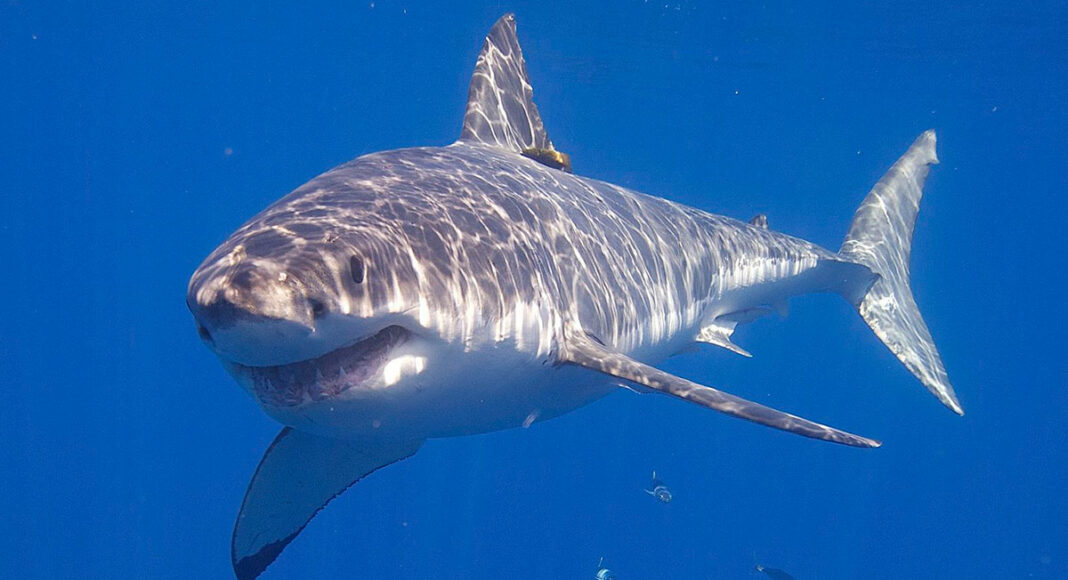A shark was recently seen leaping out of the water near Pleasure Point. The footage appeared to come from a webcam livestreamed via Surfline, a website that specializes in showing forecasts and conditions at various breaks.
“That’s definitely a white shark, with a big, white belly,” confirms Pelagic Shark Research Foundation Executive Director Sean Van Sommeran, who watched the footage make the rounds on social media.
Van Sommeran suspects the great white was likely a sub-adult, probably about 14 feet long. The shark appeared to be on the other side of a large kelp bed from a couple of surfers. Van Sommeran says white sharks will travel the corridors within kelp beds, but sharks do not barrel straight through the forests themselves, he says.
The video, which was posted to Instagram, surfaced two-and-a-half weeks after surfer Ben Kelly was bitten by a shark at Manresa State Beach, a few miles farther south. Kelly died from damage to his popliteal artery, which runs through the back of the knee, according to a coroner’s report released May 13.
Although sharks seldom wound humans, Van Sommeran says that every summer brings with it several close calls locally—shark bites to Monterey Bay kayaks, surfboards and paddleboards—and that this trend has held steady for a while.
Videos of other local marine life have recently been garnering attention. Van Sommeran released footage this past Friday of a dead gray whale floating near Steamer Lane. In one of the shots, a shark can be seen biting into the whale, wiggling its whole body as it digs in.
In general, Van Sommeran says the increasingly polarizing arguments that he hears about sharks bother him.
On the one hand, Van Sommeran has heard claims that white shark populations are growing at dangerous rates—a theory floated in the caption of the jumping shark Instagram video—sometimes even prompting theories that sharks don’t deserve any protection, all of which Van Sommeran says isn’t true. (Three dead sharks have washed ashore locally in recent years—one from a gunshot, one that was hit by a boat and another that was likely killed by poisonous runoff, Van Sommeran says.)
At the same time, Van Sommeran often hears claims that all sharks are nothing more than harmless, cute sea creatures, ones that adventure seekers should chase after and try to see up close.
Not advisable, Van Sommeran says. “It’s just so basic: Don’t swim out to the sharks,” he says.
Freak events do happen, though.
For example, Van Sommeran says he sees no reason to think that Kelly—the first person ever to die from a shark attack in Santa Cruz County—was doing anything irresponsible in the water. But in general, he says surfers should not venture offshore farther into known sub-adult shark habitat, like Soquel Cove, which is sometimes known as Shark Park—especially not with the goal of interacting with the animals.
Van Sommeran says young juveniles that often hang out close to shore and by the cement ship won’t hurt anyone, but the slightly older sub-adults should not be tested.
“It’s a large, several-hundred pounds sea creature that eats animals about your size,” Van Sommeran says. “It’s not some cute baby shark that’s waiting for you to come say ‘Hi.’ Nor is it a prehistoric creature from Amityville that’s looking to kill everyone.”













